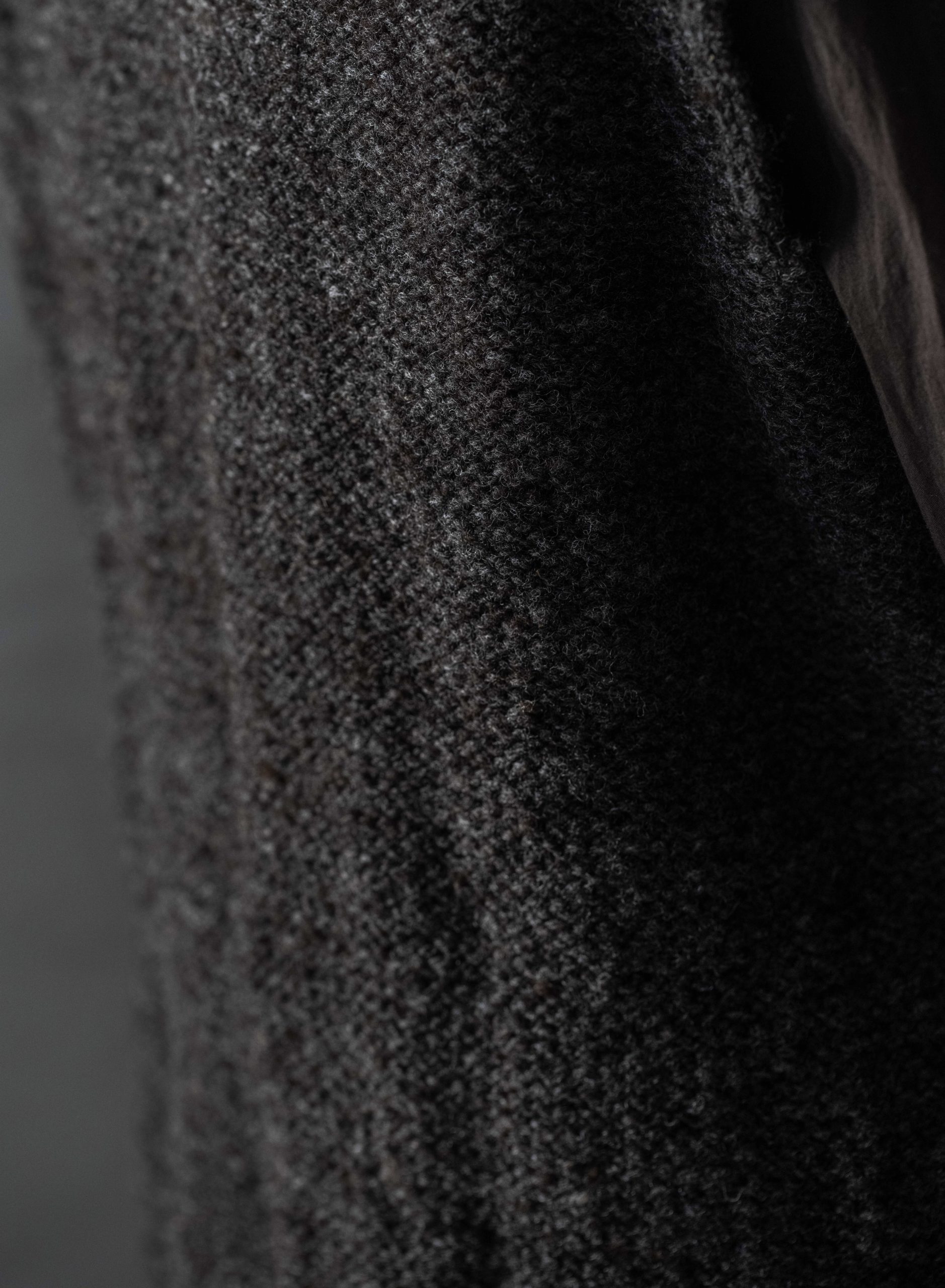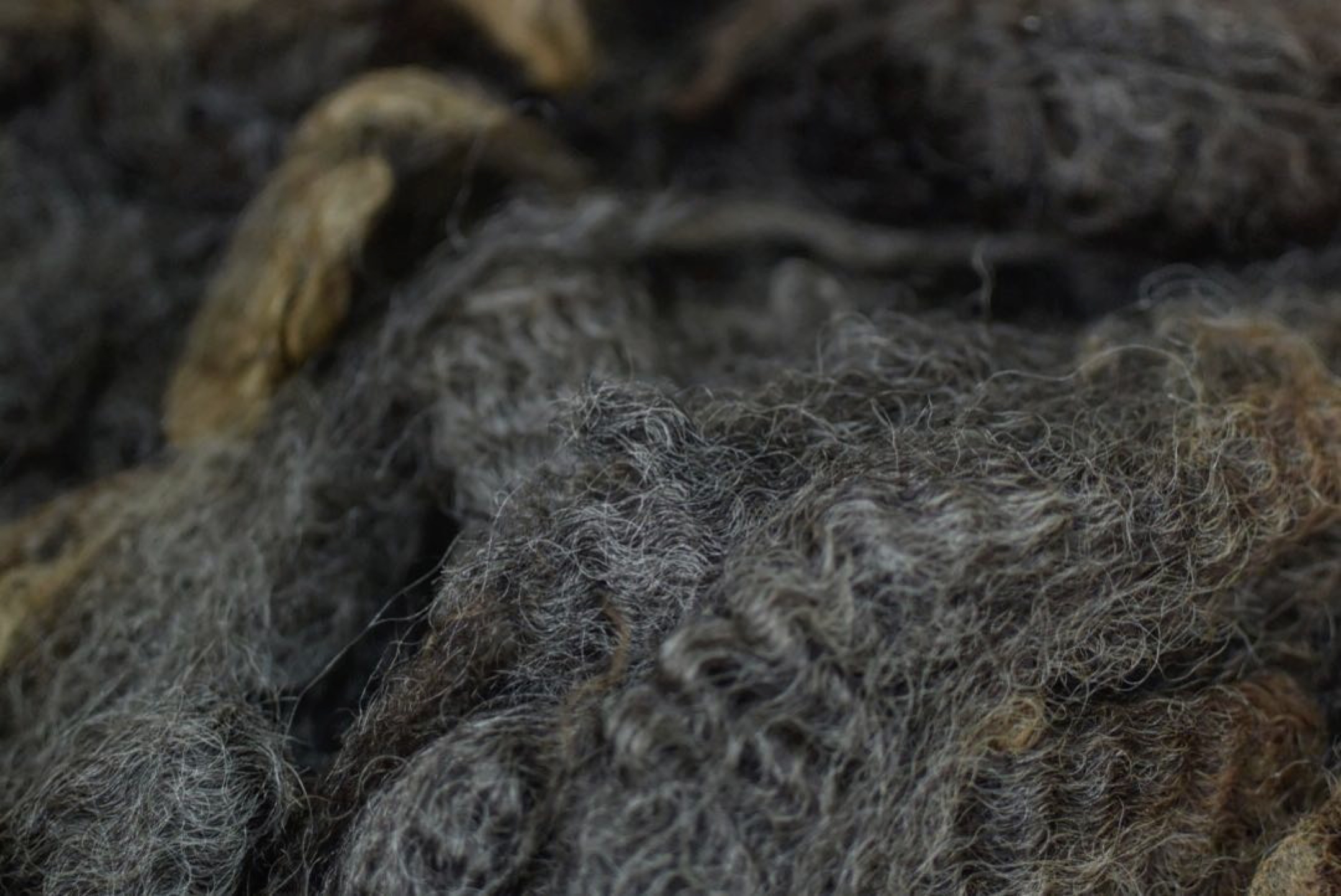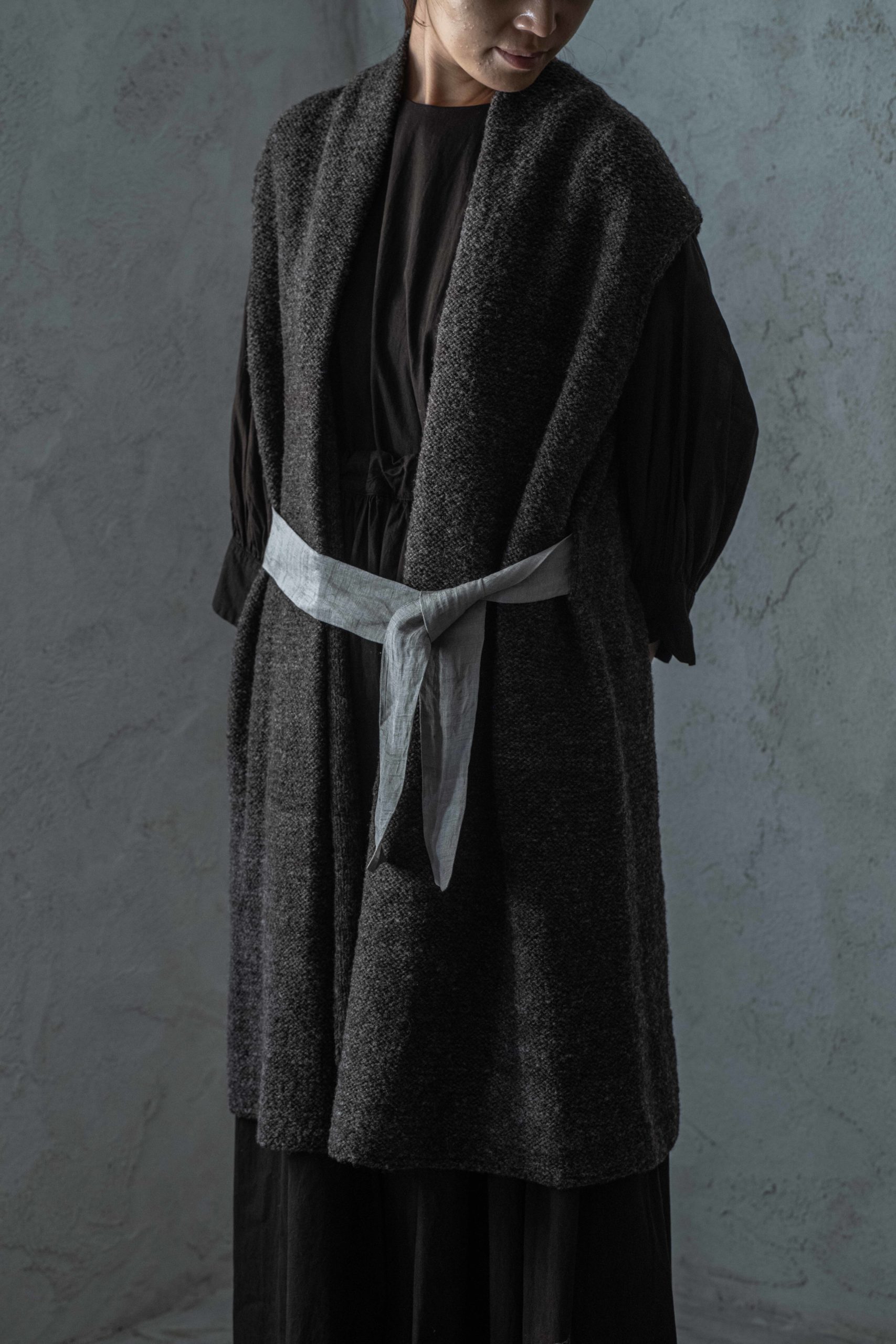Japanese Handicrafts

Hand-spun Japanese wool hand-woven haori
A hand-knitted haori coat made from hand-spun Japanese wool
When you hear the term "hand-knitted" many people may imagine soft, fluffy fabric that is full of air.
However, when you hold this hand-knitted haori in your hands, you will be surprised by its firmness and sense of security, which is completely different from the feel you are familiar with.
In fact, this texture can only be achieved by creating everything by hand.
The expressive and beautiful hand-spun yarn is the work of Kana Ushijima, and the intricate knitting, which is hard to believe was done by hand, is the work of Tomoko Kodama.
The wool from sheep that are carefully raised at the Hokkaido Whole Sheep Research Institute is used in its original form without being dyed.
The yarn is hand-washed to retain a moderate amount of oil, which gives it heat retention and allows it to intertwine tightly when woven, maintaining its beautiful shape.

The lightness that makes it easy to wear and puts no strain on the body is something that only hand-spun yarn can provide.
It feels so light, like you're not wearing anything at all, and it's a strange sensation of warming your core.
I myself am currently learning spinning and weaving as my life's work, and I am overwhelmed by the energy that resides in this single garment, which flows through my skin.
The spinning process begins with obtaining sheep's wool, which contains all of the air of the land.
Of course there are differences depending on the place of origin, but even within the same farm and breed, each cow is an individual with different qualities and personalities.
For example, sheep that like to exercise and sheep that like to be laid back will move differently, which will also affect the quality of their wool.
Also, just like us, the feel of their soft downy hair and the tough hair that protects their body are completely different.
We then carefully hand-wash the wool we have selected.
Wool contains oils, and the amount of washing is adjusted depending on what is being made.
Wool has the property of not freezing even at temperatures of minus 60 degrees Celsius, and has protected people living in extremely cold areas.
The oil contained in it also plays a role in protecting it from the outside world.

The photo shows wool after it has been washed, and the atmosphere changes completely depending on the sheep.
The texture gradually appears as the grass and dirt are removed.
After removing moisture and drying in the sunlight, the fur is combed and straightened before the process of spinning it into thread can finally begin.
Just making the thread requires an incredible number of steps.
The haori is completed using a unique Japanese division of labor, in which each step is handed over to a skilled craftsman, just like the making of a kimono, the national garment of Japan.
There is a wide variety of tools and techniques, and when looking around the world, even when producing items with the same function, they are passed down in ways unique to the local climate.
The introduction from COSMIC WONDER states, "The look of this knitted fabric is reminiscent of the primitive woolen clothing used in fishing villages and on farms somewhere in the past."
It seems as if the many events that have been accumulated over a long history nurtured in Japan are embodied in a single garment.

A garment called "Peasant's Dress"
When worn together, it brings to mind the image of grazing pastures.

